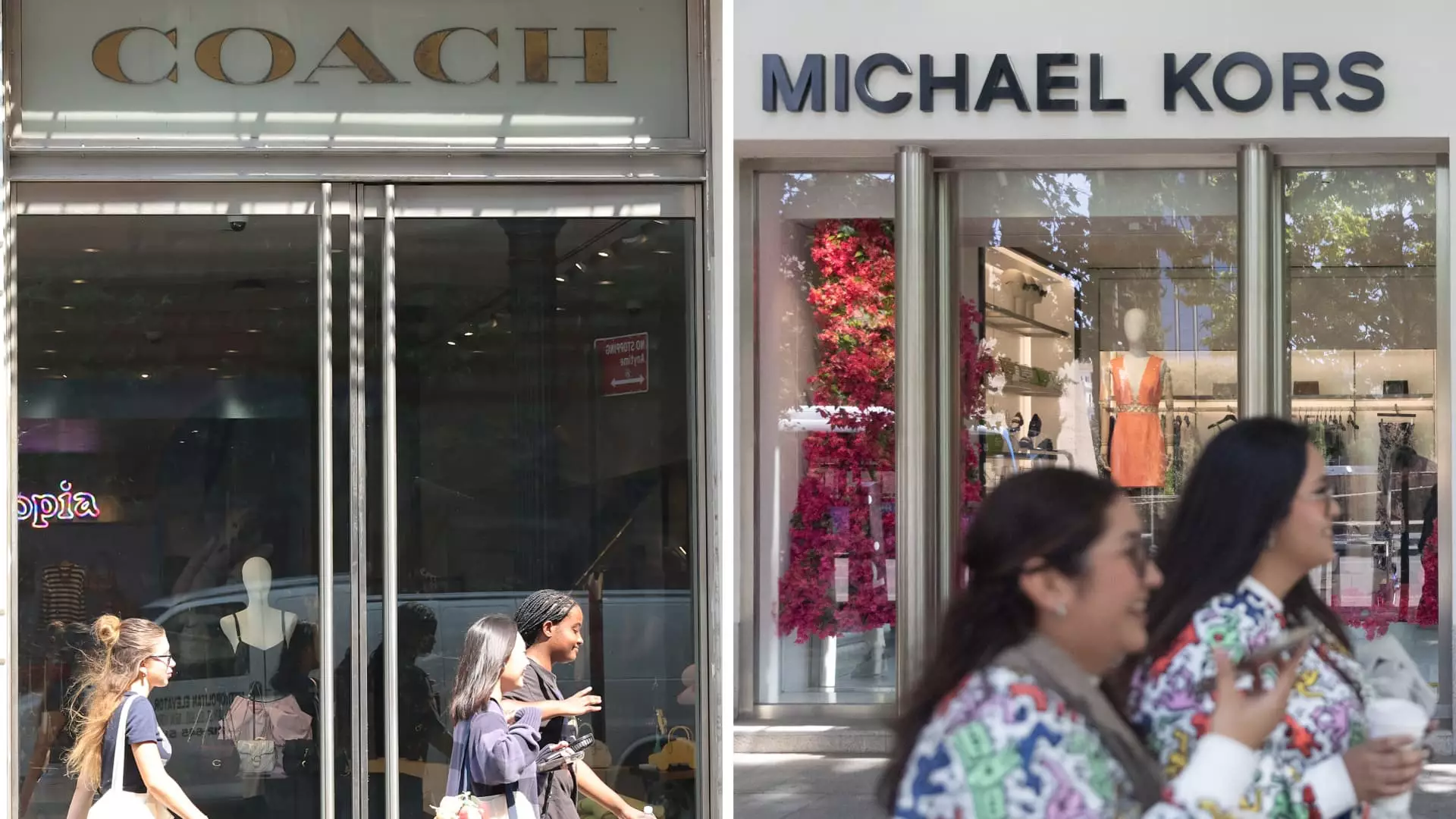On a pivotal Thursday, a federal judge intervened in the luxury fashion market by blocking Tapestry’s proposed acquisition of Capri Holdings. Judge Jennifer Rochon’s ruling followed a brief trial held in New York, where the Federal Trade Commission (FTC) positioned itself firmly against the merger. The proposed $8.5 billion deal aimed to consolidate some of the most recognizable brands in luxury fashion: Tapestry’s assets—namely Coach, Kate Spade, and Stuart Weitzman—were set to align with Capri’s portfolio that includes Versace, Jimmy Choo, and Michael Kors. The implications of this merger were viewed not just through the lens of market consolidation, but also for its potential impact on competition and consumer prices in the luxury retail sector.
Immediate reactions in the stock market reflected the significance of the ruling, with Tapestry’s shares rising by 10%, signaling investors’ belief in the company’s long-term performance despite the legal setback. Conversely, Capri Holdings’ stock plummeted nearly 50% in response to the unfavorable news. This stark contrast emphasized investor confidence in Tapestry’s strategy, while simultaneously reflecting serious concerns regarding Capri’s future after the failed merger attempt.
In the wake of the ruling, Tapestry expressed its intent to appeal, maintaining that the combined company would enhance competition and benefit consumers. The company’s statement underscored an optimism about their place in a “constantly expanding” and “highly fragmented” industry. Tapestry emphasized that the merger would create a more innovative environment capable of keeping pace with rapidly evolving consumer preferences.
However, the FTC argued against this perspective, presenting a contrasting view that suggested the merger would inhibit competition, particularly in the affordable handbag segment. FTC officials cautioned that the merger could lead to less favorable outcomes for both consumers and employees. They predicted potential price increases and a stagnation in product quality, asserting that the combined corporation might deprioritize investment in new designs or innovative endeavors.
Adding to the complexity of the merger attempt, a protective financial clause was established prior to the FTC’s decision. According to securities filings, Tapestry is obligated to cover up to $50 million in costs should the merger fail due to regulatory opposition. This arrangement signifies the high stakes involved in the deal and underscores the risks associated with navigating the regulatory landscape. Conversely, Capri Holdings stands to face a hefty breakup fee of $240 million if it decides to terminate the merger talks independently. This financial dynamic illustrates the potential repercussions for both parties should the deal fall through.
The FTC’s win has been characterized as not merely a legal victory but a decisive step toward consumer protection. Henry Liu, director of the FTC’s Bureau of Competition, emphasized that the ruling was a safeguard for consumers seeking affordable, high-quality luxury handbags. The decision fits into a broader narrative where federal authorities actively seek to curb monopolistic trends in various industries, ensuring that market competition remains robust.
In contrast, Tapestry’s advocacy, claiming that the merger would actively benefit customers by enhancing product offerings and expanding availability, faces an uphill battle. With the complexities of consumer behavior and market dynamics highlighted by shifting fashion trends and the influence of social media platforms such as TikTok, the argument for industry consolidation becomes all the more nuanced.
A Broader Context in Economic Policy
The ruling comes against the backdrop of heightened economic sensitivity among consumers. With ongoing inflation and rising prices, both the Biden administration and various political figures have voiced their commitment to preserving competition in the market to benefit consumers. As regulatory scrutiny intensifies across multiple sectors—including grocery, technology, and fashion—the landscape of business mergers is undergoing significant examination. Under Chair Lina Khan, the FTC is positioning itself to be an active guardian of competitive markets, making it clear that consumer welfare will be a determining factor in assessing future corporate consolidations.
The failed merger between Tapestry and Capri serves as a critical case study on the intersection of corporate ambitions and regulatory oversight. While the companies maintain that their merger would further innovation and benefit consumers, the FTC’s decisive blockage encapsulates an ongoing debate over how best to shape the future of consumer markets in an era of increasing economic challenges. As Tapestry prepares for the appeal process, the luxury retail landscape remains dynamic, exemplifying the ongoing tensions between corporate growth strategies and the imperative for preserving consumer choice and competition.

